 W
WCultural heritage is the legacy of cultural resources and intangible attributes of a group or society that is inherited from past generations. Not all legacies of past generations are "heritage", rather heritage is a product of selection by society.
 W
WThe Abraham Path is a cultural route believed to have been the path of Islamic, Christian, and Jewish patriarch Abraham’s ancient journey across the Ancient Near East. The path was established in 2007 as a Pilgrims' Way to mimic the historical believed route of Abraham, between his birthplace of Ur of the Chaldees, believed by some to have been Urfa, Turkey, and his final destination of the desert of Negev.
 W
WIn British law, an ancient monument is an early historical structure or monument worthy of preservation and study due to archaeological or heritage interest. The term differs from the American term "national monument" in that U.S. national monuments are comparatively few in number and may include natural formations; British ancient monuments are by definition manmade.
 W
WA cultural artifact, or cultural artefact, is a term used in the social sciences, particularly anthropology, ethnology and sociology for anything created by humans which gives information about the culture of its creator and users. Artifact is the spelling in North American English; artefact is usually preferred elsewhere.
 W
WThe Arusha Cultural Heritage Centre is located in Arusha, Tanzania. It is a place where the past and present of the Tanzania's 120-plus tribes can be viewed in a single compound. The centre boasts of various carvings, gemstones, artifacts, clothing and books.
 W
WBirthright Armenia, also known as Depi Hayk, is a volunteer internship enhancement program that also offers travel fellowships to eligible participants to assist in the development of Armenia.
 W
WManglawar valley in Pakistan is situated about 9 km to North East of Mingora, at the point where a number of side valleys descend from the watershed range to the east. The valley has a number of Buddhist reliefs and sculptures, the best known of which is the Shakhorai Buddha.
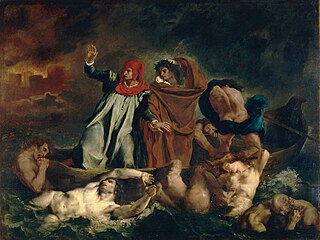 W
WThe Western classical tradition is the reception of classical Greco-Roman antiquity by later cultures, especially the post-classical West, involving texts, imagery, objects, ideas, institutions, monuments, architecture, cultural artifacts, rituals, practices, and sayings. Philosophy, political thought, and mythology are three major examples of how classical culture survives and continues to have influence. The West is one of a number of world cultures regarded as having a classical tradition, including the Indian, Chinese, Judaic, and Islamic traditions.
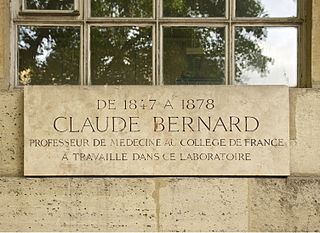 W
WA commemorative plaque, or simply plaque, or in other places referred to as a historical marker or historic plaque, is a plate of metal, ceramic, stone, wood, or other material, typically attached to a wall, stone, or other vertical surface, and bearing text or an image in relief, or both, to commemorate one or more persons, an event, a former use of the place, or some other thing. Many modern plaques and markers are used to associate the location where the plaque or marker is installed with the person, event, or item commemorated as a place worthy of visit. A monumental plaque or tablet commemorating a deceased person or persons, can be a simple form of church monument. Most modern plaques affixed in this way are commemorative of something, but this is not always the case, and there are purely religious plaques, or those signifying ownership or affiliation of some sort. A plaquette is a small plaque, but in English, unlike many European languages, the term is not typically used for outdoor plaques fixed to walls.
 W
WA commemorative stamp is a postage stamp, often issued on a significant date such as an anniversary, to honor or commemorate a place, event, person, or object. The subject of the commemorative stamp is usually spelled out in print, unlike definitive stamps which normally depict the subject along with the denomination and country name only. Many postal services issue several commemorative stamps each year, sometimes holding first day of issue ceremonies at locations connected with the subjects. Commemorative stamps can be used alongside ordinary stamps. Unlike definitive stamps that are often reprinted and sold over a prolonged period of time for general usage, commemorative stamps are usually printed in limited quantities and sold for a much shorter period of time, usually, until supplies run out.
 W
WCommon heritage of mankind is a principle of international law that holds that defined territorial areas and elements of humanity's common heritage should be held in trust for future generations and be protected from exploitation by individual nation states or corporations.
 W
WConservation and restoration of objects made from plastics is an activity dedicated to the conservation of objects of historical and personal value made from plastics. When applied to cultural heritage this activity is generally undertaken by a conservator-restorer. Within museum collections there are a variety of artworks and artifacts that are composed of plastic material whether they are synthetic or semi-synthetic; these were created for a range of uses from artistic, to technical, to domestic use. Plastics have become an integral component of life and many plastic objects have become staple icons or objects worth preserving for the future. Although relatively new material for museum collections, plastics having originated in the 19th century, they are deteriorating at an alarming rate, risking the loss not only of the objects themselves, but through their deterioration processes they place objects within their vicinity at risk too. Plastics are made of synthetic, semi-synthetic and organic material, all of which are susceptible to degradation, with their respective off-gassing being harmful to the objects nearby in museum collections.
 W
WStained glass conservation refers to the protection and preservation of historic stained glass for present and future generations. It involves any and all actions devoted to the prevention, mitigation, or reversal of the processes of deterioration that affect such glassworks and subsequently inhibit individuals' ability to access and appreciate them, as part of the world's collective cultural heritage. It functions as a part of the larger practices of cultural heritage conservation (conservation-restoration) and architectural conservation.
 W
WThe conservation and restoration of cultural heritage focuses on protection and care of tangible cultural heritage, including artworks, architecture, archaeology, and museum collections. Conservation activities include preventive conservation, examination, documentation, research, treatment, and education. This field is closely allied with conservation science, curators and registrars.
 W
WThe Conservation of South Asian household shrines is an activity dedicated to the preservation of household shrines from South Asia. When applied to cultural heritage, held by either museums or private collectors, this activity is generally undertaken by a conservator-restorer. South Asian shrines held in museum collections around the world are principally shrines relate to Hindu, Jain, or Buddhist households. Due to their original use and sacred nature, these shrines present unique conservation and restoration challenges for those tasked with their care.
 W
WCultural property are physical items that are part of the cultural heritage of a group or society. They include such items as historic buildings, works of art, archaeological sites, libraries and museums.
 W
WThe Deaf rights movement encompasses a series of social movements within the disability rights and cultural diversity movements that encourages deaf and hard of hearing to push society to adopt a position of equal respect for them. Acknowledging that those who were Deaf or hard of hearing had rights to obtain the same things as those hearing lead this movement. Establishing an educational system to teach those with Deafness was one of the first accomplishments of this movement. Sign language, as well as cochlear implants, has also had an extensive impact on the Deaf community. These have all been aspects that have paved the way for those with Deafness, which began with the Deaf Rights movement.
 W
WThe documentation of cultural property is a critical aspect of collections care. As stewards of cultural property, museums collect and preserve not only objects but the research and documentation connected to those objects, in order to more effectively care for them. Documenting cultural heritage is a collaborative effort. Essentially, registrars, collection managers, conservators, and curators all contribute to the task of recording and preserving information regarding collections. There are two main types of documentation museums are responsible for: records generated in the registration process—accessions, loans, inventories, etc. and information regarding research on objects and their historical significance. Properly maintaining both types of documentation is vital to preserving cultural heritage.
 W
WA first language, native tongue, native language, or mother/father/parent tongue, is a language that a person has been exposed to from birth or within the critical period. In some countries, the term native language or mother tongue refers to the language of one's ethnic group rather than one's first language.
 W
WThe Great Cemetery of Kuopio is a large cemetery located in the Puijo district in Kuopio, Finland. The cemetery was founded in 1867 and has been expanded several times in the 20th century. The cemetery is located in the area of Kuopio Cathedral Parish and is also known as the Kuopio City Parish Cemetery. The cemetery is bordered on the south by the Kouvola–Iisalmi railway, on the west by the Blessing Chapels along Karjalankatu and the building of the Finnish Orthodox Church Museum and Ecclesiastical Government, on the north by the Highway 5, and on the east by Puijonkatu street.
 W
WTasoula Georgiou Hadjitofi was born in 1959 in Cyprus and lives in the Netherlands. She is an author, a cultural activist and an entrepreneur.
 W
WHailuoto is an island and a municipality in Northern Ostrobothnia region, Finland. The population of Hailuoto is 949, which make it the smallest municipality in Northern Ostrobothnia and the former Oulu Province in terms of population. The municipality covers an area of 200.53 km2 (77.43 sq mi) of which 1.70 km2 (0.66 sq mi) is inland water. The population density is 4.73/km2 (12.3/sq mi). Of all the Finnish islands in Finland's sea areas, Hailuoto is the third largest after Fasta Åland and Kimitoön.
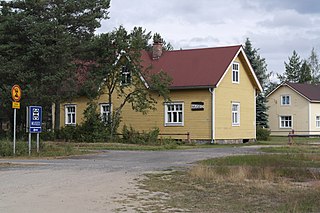 W
WA heritage centre, center, or museum is a public facility – typically a museum, monument, visitor centre, or park – that is primarily dedicated to the presentation of historical and cultural information about a place and its people, and often also including, to some degree, the area's natural history. Heritage centres typically differ from most traditional museums in featuring a high proportion of "hands-on" exhibits and live or lifelike specimens and practical artifacts.
 W
WHeritage interpretation refers to all the ways in which information is communicated to visitors to an educational, natural or recreational site, such as a museum, park or science centre. More specifically it is the communication of information about, or the explanation of, the nature, origin, and purpose of historical, natural, or cultural resources, objects, sites and phenomena using personal or non-personal methods. Some international authorities in museology prefer the term mediation for the same concept, following usage in other European languages.
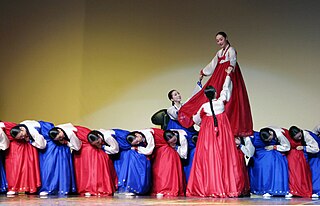 W
WThe heritage preservation system of South Korea is a multi-level program aiming to preserve and cultivate Korean cultural heritage. The program is administered by the Cultural Heritage Administration, and the legal framework is provided by the Cultural Heritage Protection Act of 1962, last updated in 2012. The program started in 1962 and has gradually been extended and upgraded since then.
 W
WHeritage science is the interdisciplinary domain of scientific study of heritage. Heritage science draws on diverse humanities, sciences and engineering disciplines. It focuses on enhancing the understanding, care and sustainable use of heritage so it can enrich people's lives, both today and in the future. Heritage science is an umbrella term encompassing all forms of scientific enquiry into human works and the combined works of nature and humans, of value to people.
 W
WCultural heritage tourism is a branch of tourism oriented towards the cultural heritage of the location where tourism is occurring.
 W
WHeritage Week is an annual nationwide set of hundreds of events organized by the Heritage Council in Ireland.
 W
WThe hermitage at Schaelsberg is a monumental hermitage in Schin op Geul, in the municipality of Valkenburg aan de Geul, Netherlands. Build in 1688 for the lords of nearby castle Schaloen, the chapel and attached living space, housed a succession of 16 hermits from its foundation until 1930. The chapel and nearby stations of the cross, added in 1843, are a national monument. Since 1758 a yearly procession, the Sjaasbergergank, is held to the hermitage, and this procession is listed as national intangible cultural heritage. Located in a tourist area of South Limburg, it is a popular tourist attraction.
 W
WHistoric preservation (US), heritage preservation or heritage conservation (UK), is an endeavor that seeks to preserve, conserve and protect buildings, objects, landscapes or other artifacts of historical significance. It is a philosophical concept that became popular in the twentieth century, which maintains that cities as products of centuries’ development should be obligated to protect their patrimonial legacy. The term refers specifically to the preservation of the built environment, and not to preservation of, for example, primeval forests or wilderness.
 W
WThe Icheri Bazar is located in the center of Qakh city, Azerbaijan. It was built in the first half of 18th century and was renovated by the Russians in the 19th century.
 W
WThis is a list of immovable cultural properties of Rožaje. The locations according to the numbers are given on the image on the right. (Suggestion: Resize the image to see the numbers clearly.)
 W
WThe COVID-19 pandemic had a sudden and substantial impact on the arts and cultural heritage sector. The global health crisis and the uncertainly resulting from it profoundly affected organisations' operations as well as individuals—both employed and independent—across the sector. Arts and culture sector organisations attempted to uphold their mission to provide access to cultural heritage to the community; maintain the safety of their employees, collections, and the public; while reacting to the unexpected change in their business model with an unknown end.
 W
WIndigenous archaeology is a sub-discipline of western archaeological theory that seeks to engage and empower indigenous people in the preservation of their heritage and to correct perceived inequalities in modern archaeology. It also attempts to incorporate non-material elements of cultures, like oral traditions, into the wider historical narrative. This methodology came out of the global anti-colonial movements of the 1970s and 1980s led by aboriginal and indigenous people in settler-colonial nations, like the United States, Canada, and Australia. Major issues the sub-discipline attempts to address include the repatriation of indigenous remains to their respective peoples, the perceived biases that western archaeology's imperialistic roots have imparted into its modern practices, and the stewardship and preservation of indigenous people's cultures and heritage sites. This has encouraged the development of more collaborative relationships between archaeologists and indigenous people and has increased the involvement of indigenous people in archaeology and its related policies.
 W
WIndustrial heritage refers to the physical remains of the history of technology and industry, such as manufacturing and mining sites, as well as power and transportation infrastructure. Another definition expands this scope so that the term also covers places used for social activities related to industry such as housing, museums, education or religious worship, among other structures with values from a variety of fields in order to highlight the interdisciplinary character of industrial heritage. It is also argued that it includes the so-called sociofacts or aspects of social and institutional organizations, and mentifacts that constitute the attitudinal characteristics and value systems industrial heritage sites.
 W
WThe Information Center for Israeli Art is the largest collection of primary resources documenting the history of the Israeli art in Israel. Over 12,000 artists files are housed in the Center in the Israel Museum, Jerusalem.
 W
WAn intangible cultural heritage (ICH) is a practice, representation, expression, knowledge, or skill considered by UNESCO to be part of a place's cultural heritage. Buildings, historic places, monuments, and artifacts are physical intellectual wealth. Intangible heritage consists of nonphysical intellectual wealth, such as folklore, customs, beliefs, traditions, knowledge, and language. Intangible cultural heritage is considered by member states of UNESCO in relation to the tangible World Heritage focusing on intangible aspects of culture. In 2001, UNESCO made a survey among States and NGOs to try to agree on a definition, and the Convention for the Safeguarding of Intangible Cultural Heritage was drafted in 2003 for its protection and promotion.
 W
WAn interpretation centre, interpretive centre, or visitor interpretive centre is an institution for dissemination of knowledge of natural or cultural heritage. Interpretation centres are a kind of new-style museum, often associated with visitor centres or ecomuseums, and located in connection to cultural, historic or natural sites.
 W
WA Cultural Property is administered by the Japanese government's Agency for Cultural Affairs, and includes tangible properties ; intangible properties ; folk properties both tangible and intangible; monuments historic, scenic and natural; cultural landscapes; and groups of traditional buildings. Buried properties and conservation techniques are also protected. Together these cultural properties are to be preserved and utilized as the heritage of the Japanese people.
 W
WLetterlocking is the act of folding and securing a written message which could be on papyrus, parchment, or paper, so that it does not require an envelope or additional enclosure. It is a document security tradition which utilizes folding and cutting. The process dates to the 13th century in Western history, corresponding with the availability of flexible writing paper. Letterlocking uses small slits, tabs, and holes placed directly into a letter, which combined with folding techniques are used to secure the letter ("letterpacket"), preventing reading the letter without breaking seals or slips, providing a means of tamper resistance. These folds and holes may be additionally secured with string and sealing wax. A Scottish diplomat in Italy, William Keith of Delny, sent letters to James VI of Scotland which would tear in two if not opened with care.
 W
WLooted art has been a consequence of looting during war, natural disaster and riot for centuries. Looting of art, archaeology and other cultural property may be an opportunistic criminal act or may be a more organized case of unlawful or unethical pillage by the victor of a conflict. The term "looted art" reflects bias, and whether particular art has been taken legally or illegally is often the subject of conflicting laws and subjective interpretations of governments and people; use of the term "looted art" in reference to a particular art object implies that the art was taken illegally.
 W
WMIDAS Heritage – the UK Historic Environment Data Standard is a British cultural heritage standard for recording information on buildings, archaeological sites, shipwrecks, parks and gardens, battlefields, areas of interest and artefacts.
 W
WNakhl Gardani is a Shia religious ritual carried out on the day of Ashura for commemorating the death of Husayn ibn Ali, the grandson of the Prophet Moḥammad and third Shia Imam. Nakhl is a wooden structure used as a symbolic representation of the Imam's coffin and Nakhl Gardani is the act of carrying the Nakhl from one place to another, resembling an Imam's funeral.
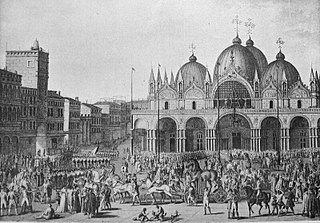 W
WThe Napoleonic looting of art was a series of confiscations, particularly of artworks and precious objects, carried out by the French army or French officials in the territories of the First French Empire, including the Italian peninsula, Spain, Portugal, the Low Countries, and Central Europe. The looting continued for nearly 20 years, from 1797 to the Congress of Vienna in 1815.
 W
WThe National Heritage Board of Poland is a Polish governmental institution responsible for the objects considered most important to the nation's cultural heritage.
 W
WA national heritage site is a heritage site having a value that has been registered by a governmental agency as being of national importance to the cultural heritage or history of that country. Usually such sites are listed in a heritage register that is open to the public, and many are advertised by national visitor bureaus as tourist attractions.
 W
WOlfactory heritage is an aspect of cultural heritage concerning smells that are meaningful to a community due to their connections with significant places, practices, objects or traditions, and can therefore be considered part of the cultural legacy for future generations.
 W
WAn open-air museum is a museum that exhibits collections of buildings and artifacts out-of-doors. It is also frequently known as a museum of buildings or a folk museum.
 W
WPalojoki is a village of about a thousand inhabitants in Nurmijärvi, Finland. It is located close to the border of Tuusula, about 30 kilometers north of Helsinki, and the regional road 139 runs from the Nurmijärvi's church village to Hyrylä, Tuusula. Klaukkala is 12 kilometres (7.5 mi) from Palojoki. The village has a primary school called Palojoki School.
 W
WRepatriation is the return of art or cultural heritage, often referring to ancient or looted art, to their country of origin or former owners. The disputed cultural property items are physical artifacts of a group or society that were taken from another group usually in an act of looting, whether in the context of imperialism, colonialism or war. The contested objects vary widely and include sculptures, paintings, monuments, objects such as tools or weapons for purposes of anthropological study, and human remains.
 W
WRescue archaeology, sometimes called commercial archaeology, preventive archaeology, salvage archaeology, contract archaeology, or compliance archaeology, is state-sanctioned, for-profit archaeological survey and excavation carried out in advance of construction or other land development. These conditions could include, but are not limited to, highway projects, major construction, the flood plain of a proposed dam, or even before the onset of war. Unlike traditional survey and excavation, rescue archaeology must be undertaken at speed. Rescue archaeology is included in the broader categories that are cultural resource management (CRM) and cultural heritage management (CHM).
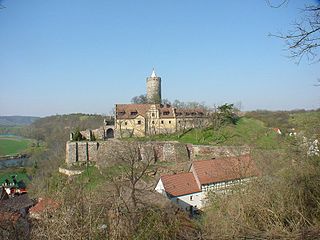 W
WSchönburg Castle, is in the municipality of Schönburg, Saxony-Anhalt, Germany. It has been proposed by Germany as a World Heritage Site.
 W
WSiyadi House, also known as Bayt Siyadi is a historic building in Muharraq City, Kingdom of Bahrain. It is part of a larger complex of buildings constructed for the pearl merchant Abdullah bin Isa Siyadi, which further includes a mosque and a majlis. While the Siyadi House was built under Ahmad bin Jassim Siyadi, the construction of the Siyadi Majlis was initiated by Ahmad bin Jassim Siyadi and the Siyadi Mosque was a shared initiative of Isa and Jassim bin Ahmad Siyadi. It is also a part of the Bahrain pearling trail, the second UNESCO World Heritage Site in the country.
 W
W"The Spoils of War—World War II and Its Aftermath: The Loss, Reappearance, and Recovery of Cultural Property" was an international symposium held in New York City in 1995 to discuss the artworks, cultural property, and historic sites damaged, lost, and plundered as a result of World War II. The three-day event was sponsored by the Bard Graduate Center for Studies in the Decorative Arts to commemorate the 50th anniversary of the end of the war. The conference was organized by Elizabeth Simpson, an archaeologist and professor at the Bard Graduate Center.
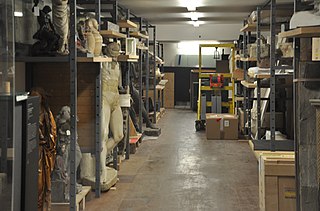 W
WThe storage of cultural heritage objects typically falls to the responsibility of cultural heritage institutions, or individuals. The proper storage of these objects can help to ensure a longer lifespan for the object with minimal damage or degradation. With so many different types of artifacts, materials, and combinations of materials, keepers of these artifacts often have considerable knowledge of the best practices in storing these objects to preserve their original state.
 W
WTelugu Saamskruthika Niketanam, also called World Telugu Museum, is located in Visakhapatnam, Andhra Pradesh, India.
 W
WTibet House US (THUS) is a Tibetan cultural preservation and education nonprofit founded in 1987 in New York City by a group of Westerners after the Fourteenth Dalai Lama, Tenzin Gyatso, had expressed his wish to establish a cultural institution to build awareness of Tibetan culture.
 W
WThe values embodied in cultural heritage are identified in order to assess significance, prioritize resources, and inform conservation decision-making. It is recognised that values may compete and change over time, and that heritage may have different meanings for different stakeholders.
 W
WWarsaw recommendation on recovery and reconstruction of cultural heritage is a document from 2018 constituting a comprehensive set of principles concerning the process of urban reconstruction and reconstruction of historic buildings or complexes of buildings destroyed as a result of armed conflicts or natural disasters.